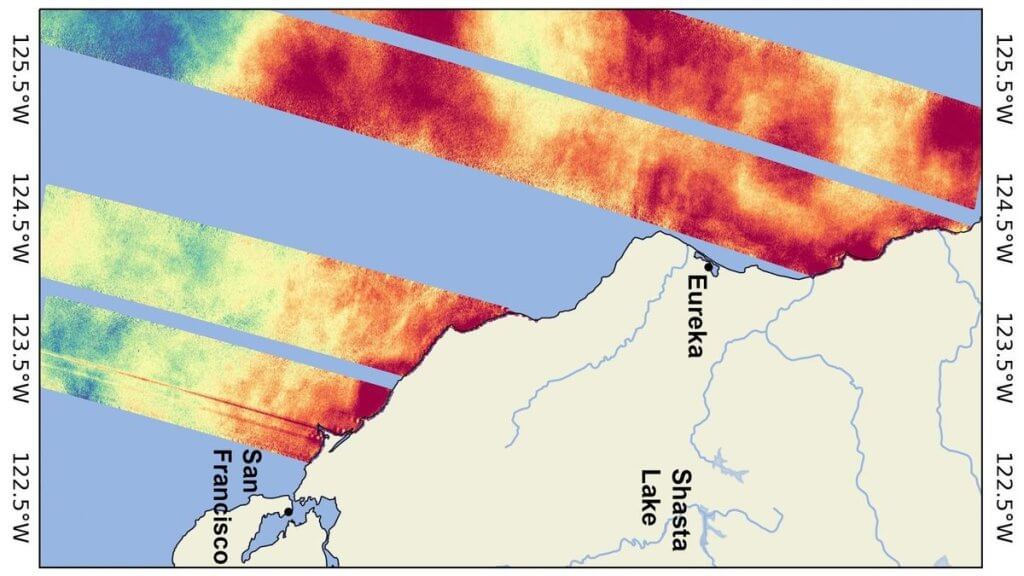
Satellite spots marine heat wave off the California coast (image) (Image Credit: Space.com)
El Niño is coming.
Or, rather, El Niño is already here. The Surface Water and Ocean Topography (SWOT) satellite, a collaboration between NASA and the French space agency CNES (Centre National d’Études Spatiales), has captured a marine heat wave off the coast of California in data from August 2023.
SWOT, which launched in December 2022, measures sea levels all around Earth using a Ka-band Radar Interferometer (KaRIn) instrument that sends radar pulses from its two antennas to collect water-height measurements. The image above is a visualization of SWOT data that indicates higher-than-average sea surface heights, demonstrated by the red colors. Where the sea is blue, the water levels are lower than normal.
Related: Climate change: Causes and effects
One reason sea levels can rise is due to the fact that water expands when it warms — and that’s a signature of El Niño, a climate cycle that sees the Pacific Ocean warm and the trade winds weaken at irregular intervals. El Niño can impact weather conditions around the world: The southwestern U.S. typically experiences cooler temperatures and wetter weather, whereas in the western Pacific, some countries typically experience drought.

Just this month, the U.S. National Oceanic and Atmospheric Administration (NOAA) “forecast a greater than 70% chance for a strong El Niño this coming winter,” according to a statement by NASA’s Jet Propulsion Laboratory (JPL) in Southern California.
As this coming cycle might be particularly strong, scientists can use SWOT data to monitor the sea level changes to inform their forecasts and models.
“SWOT’s ability to measure sea surface so close to the coast will be invaluable for researchers but also forecasters looking at things like the development and progress of worldwide phenomena like El Niño,” Ben Hamlington, a sea level researcher at JPL, said in the statement.





